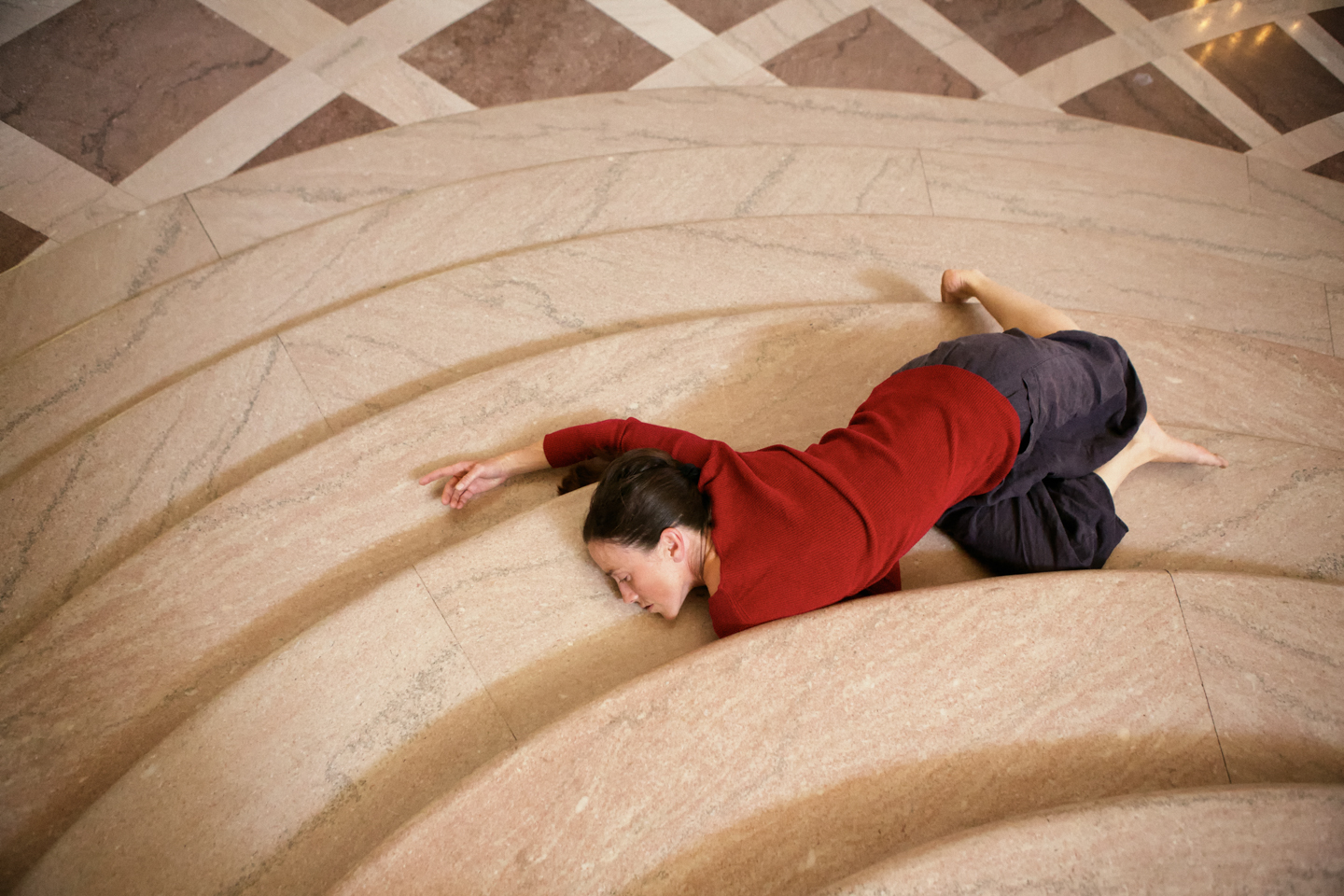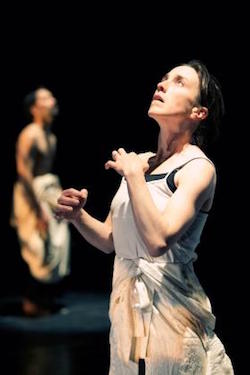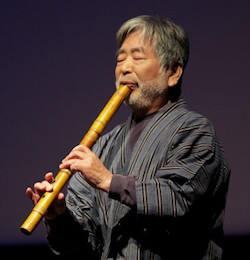
Breath was programmed by Shinichi Iova-Koga, artistic director of San Francisco-based physical theater and dance company, inkBoat, and included shakuhachi master Masayuki Koga, dancer Dana Iova-Koga, vocal duo Ghost Lore (Tim Kim and Katherine McDonald), and live calligraphy painting by Aoi Yamaguchi.
Dancer Iova-Koga’s untitled solo was by far the night’s most captivating performance. Her lithe, travel-through-evolution dance managed to be gripping, humorous, heartbreaking, and searingly honest. McDonald’s vocal accompaniment provided a subtle partner.
Beginning on the floor — frustrating some people because the large audience tucked into the museum’s back atrium reduced sight lines — Iova-Koga extended her left leg. Her bare foot, crooked and displaying wrinkles and soft gray dirt picked up from the floor, quivered with vulnerability. Or maybe it was simply a primordial experience of breath passing through a body that moments later swam, surfaced, briefly squatted, and sauntered like a gorilla before gaining verticality. With a blink and deliberate, two-second stare-downs, Iova-Koga established that a human being had arrived.

Astounding in it’s subtlety and with each progression achieved in mere seconds, the solo progressed through a panoply of human history: self-awareness, celebrity, athleticism, gun violence, lust, industrialization, objectification, gender identity, automation, and on and on. Her gestures suggested society’s full spectrum — a friendly wave to people outside the museum who paused to look through the windows and elicited delighted laughs from the audience; a “forgotten” left arm extended to one side as if encircling the shoulders of a companion while the right arm competed for attention by flagellating and engaging in a busy, repetitious, dehumanizing chore; an invisible cell phone held in one hand that moved to her face and became a blindfold and an allegorical gesture whose meaning was clear in our era of preoccupation with mobile devices.
If it sounds cliché-ridden, it was not. Impeccable timing and a choreographic arc that made each point but never overstayed the moment made evocative, organic statements. The end, with a return to the floor, left Iova-Koga lying on her side, back to audience, ribs expanding and contracting as she breathed, her upraised thumb and pointer finger separated by centimeters in a “pincher” position as if to suggest that this small space, this gap, is where our last breath remains just before life ends. It was a remarkable performance.
 Impressive also was Masayuki Koga, displaying control and power in three songs he performed on the Japanese flute. The shakuhachi’s rich tone makes it a pleasing instrument to listen to. In the hands of a skilled professional, warm color blended with raw texture to extend its range. In “Ancient Wind,” Koga built an improvisational piece from non-Western and non-Japanese scales that he said were “emotional scales.” Breath was three-dimensional: heard at his mouth, within the flute, and in the notes filling the atrium.
Impressive also was Masayuki Koga, displaying control and power in three songs he performed on the Japanese flute. The shakuhachi’s rich tone makes it a pleasing instrument to listen to. In the hands of a skilled professional, warm color blended with raw texture to extend its range. In “Ancient Wind,” Koga built an improvisational piece from non-Western and non-Japanese scales that he said were “emotional scales.” Breath was three-dimensional: heard at his mouth, within the flute, and in the notes filling the atrium.
